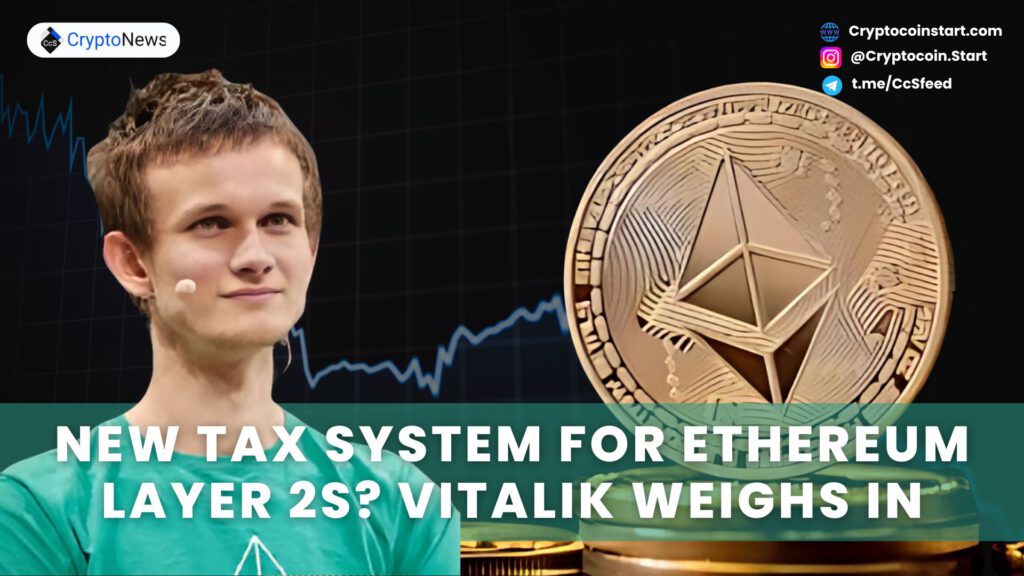
Harberger Tax Proposal for Layer 2 Blockchains
Buterin suggested applying a Harberger tax to Layer 2 blockchains. This tax model would require L2s to pay continuous fees based on their economic value. The goal is to find a method to unlock value without constant monitoring, offering a more dynamic approach to taxation.
However, Buterin highlighted some risks associated with implementing this system. The concern is that L2 networks might undervalue their assets to avoid paying higher taxes, potentially destabilizing the entire ecosystem.
Challenges with Harberger Tax Implementation
The introduction of a Harberger tax in Ethereum could lead to unintended consequences for Layer 2 ecosystems:
- Layer 2 networks may falsely undervalue their operations to reduce tax liabilities.
- The complexity of enforcing such a tax could make the system difficult to implement across decentralized networks.
- There is a risk of destabilizing the Layer 2 blockchain economy, creating a less secure environment for participants.
This conflict between taxation and stability suggests that the Harberger tax may not be the ideal solution for Ethereum’s Layer 2 networks.
Buterin Suggests Alternative to Harberger Tax
Understanding the drawbacks of the Harberger tax, Buterin offered a potential alternative. He proposed an “in-protocol” solution that could allow Ethereum’s Layer 1 to directly collect fees from Layer 2 networks. This system would help ensure that L2s contribute their share to the Ethereum network, but Buterin recognized the challenges of implementing such a system.
To illustrate these challenges, Buterin drew an analogy to a government collecting sales tax through digital payment platforms. The process of determining execution fees on Layer 2 networks mirrors the difficulties governments face in tracking and collecting taxes from decentralized sources. As a result, enforcement becomes a significant challenge in this model.
Optional Layer for Layer 2 Fee Collection
In response to criticism of the existing proposals, Buterin suggested a less aggressive approach. He proposed the creation of a “maximally neutral-L2 proof aggregation layer.” This layer would serve as an optional mechanism for Layer 2 networks to meet their fee obligations to Ethereum’s Layer 1.
The aggregation layer would operate as an additional route for Layer 2 networks to pay their fees, offering flexibility. If a Layer 2 network chooses not to join this optional layer, it would still be required to pay the standard gas fees of 500,000 gas per proof, which is the current fee structure.
Buterin emphasized that this aggregation layer would be open-source and could be developed by anyone. While he expressed uncertainty about the ultimate effectiveness of this approach, he believes it could address some of the issues related to fee collection without forcing rigid compliance.
Balancing Innovation and Stability in Layer 2 Tax Models
Buterin’s proposals highlight the complexity of designing a tax system that supports both innovation and stability in Layer 2 blockchains. The challenge lies in creating a framework that generates necessary revenue for Ethereum’s Layer 1 without undermining the economic structure of Layer 2 networks.
Any changes to Ethereum’s fee structure must carefully consider the potential impacts on the broader ecosystem. Buterin’s idea of a neutral proof aggregation layer appears to be a compromise that provides Layer 2 solutions with flexibility while ensuring they contribute economically to Ethereum’s Layer 1.
Ultimately, as Buterin noted, there is no perfect solution at this time. Developers and the broader Ethereum community will need to continue exploring options to balance the economic dynamics between Layer 1 and Layer 2 networks while maintaining network stability.

